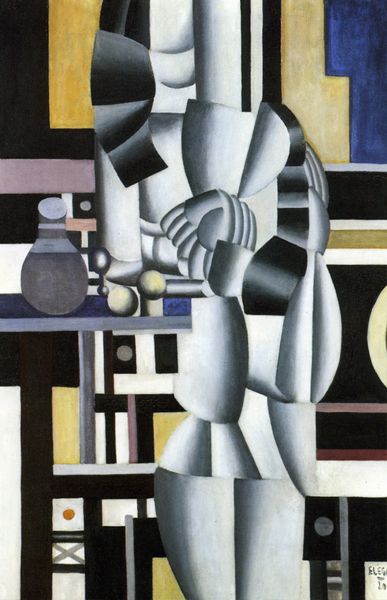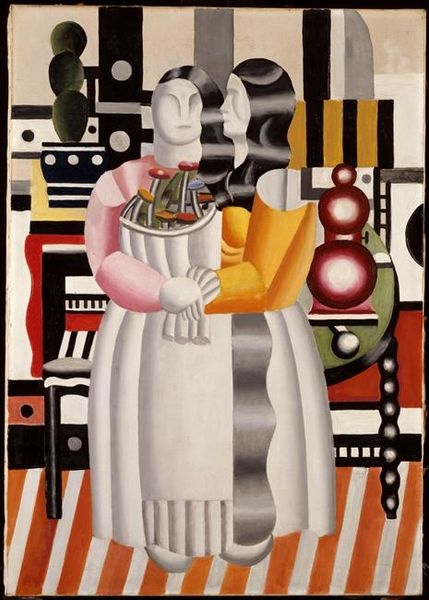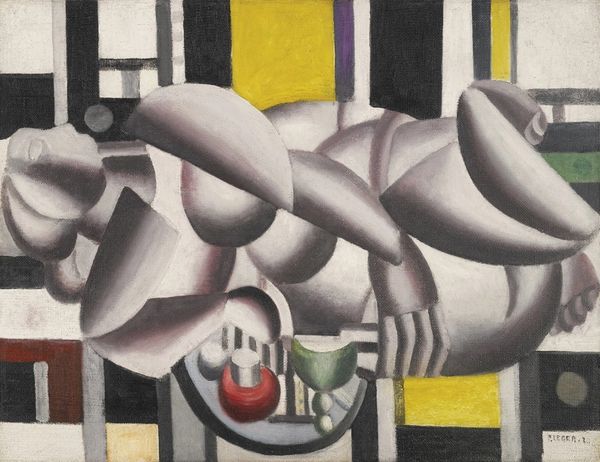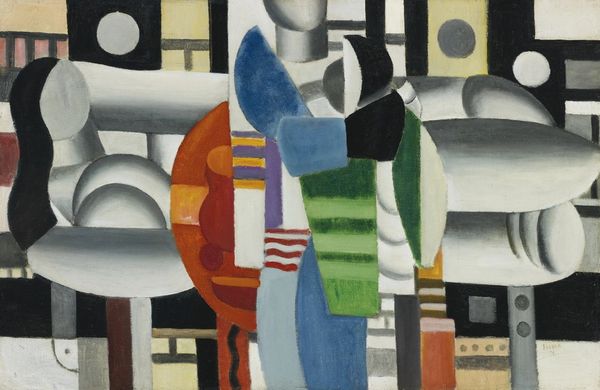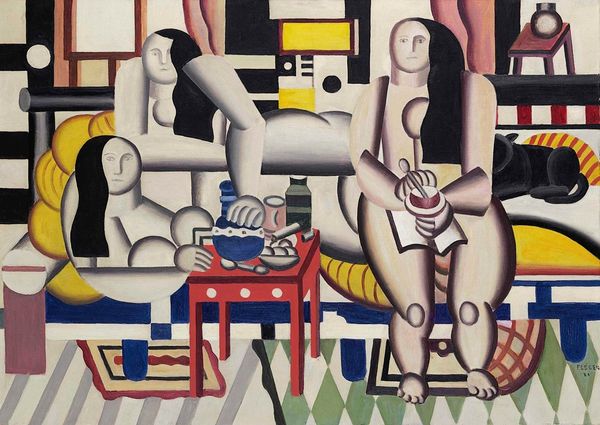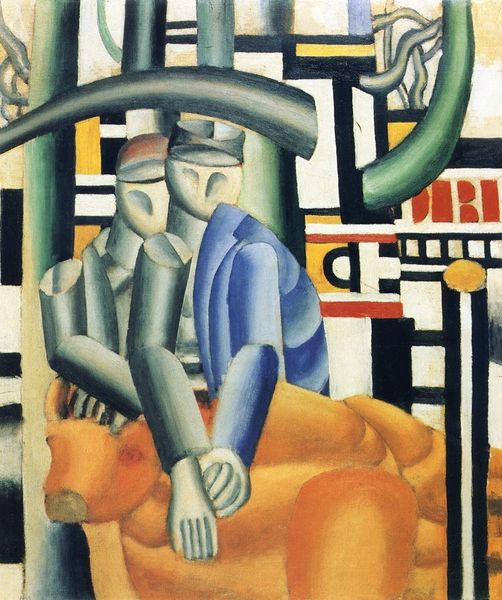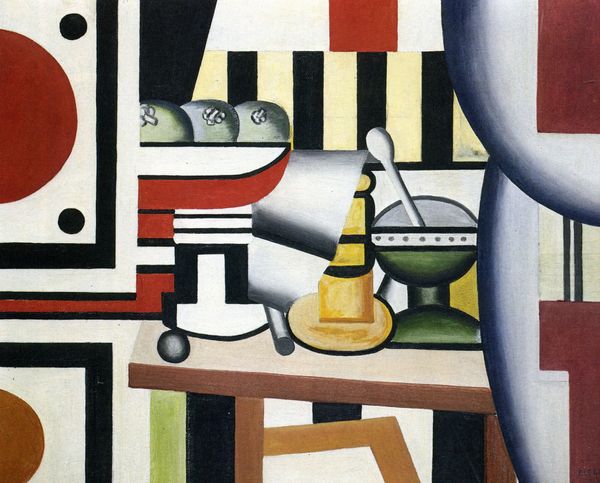
painting, oil-paint
#
cubism
#
painting
#
oil-paint
#
figuration
#
geometric
#
expressionism
#
3d art
#
modernism
Copyright: Modern Artists: Artvee
Fernand Léger created "La Tasse de thé" using oil on canvas. Painted in France, likely during the early 20th century, this artwork embodies Léger's machine aesthetic. Notice how he reduces figures and objects to their basic geometric forms. Léger seems to reflect the industrial age, where human elements merge with mechanical components. The painting challenges traditional art institutions by celebrating the modern world. It reflects a shift away from classical ideals toward a more abstract and industrial-influenced style. To understand Léger's influences, one might explore the socio-political context of post-war France, the rise of industry, and the avant-garde movements of the time. By looking into manifestos, exhibition records, and critical reviews, we can decode the messages embedded in this painting. This is a reminder that art is deeply interwoven with the social and institutional forces that shape its creation and reception.
Comments
No comments
Be the first to comment and join the conversation on the ultimate creative platform.

